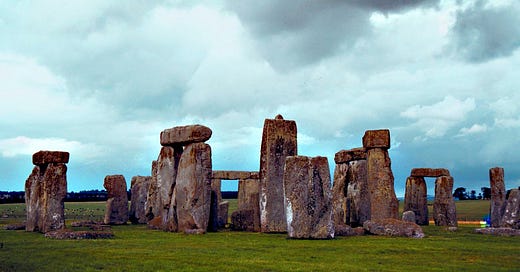So Little Daylight, and It Won't Stand Still
THIS IS IT, the bottom, the shortest day of the year, officially. Three months of gathering dread and gloom have reached their conclusion. But! The sunsets have already been getting better. But also: the sunrises will keep getting worse. In New York City, the earliest sunset was two weeks ago, at 4:28 p.m. on December 7; the latest sunrise won't be until January 4, at 7:20 a.m (when the day itself will be 6 minutes and 35 seconds longer than it is today).
Why do the days slide around like this? This seems like something that should be intuitive, for talking monkeys clinging to our spinning rock as it orbits its light source in space. Things get brighter and warmer, then darker and colder, and our ancestors went to the trouble of setting up big rocks to mark the regular pattern of it all. It feels very stupid not to be on top of this situation.
Yet the situation is a tricky one. Personally, I spent five decades gradually advancing from complete ignorance of it to a sort of baffled half-awareness that the sunsets get screwy this time of year. Lots of things are like this, to some extent: the astronomers have helpfully filled in the background about one's place in the cosmos, but the day-to-day details get lost. The basics of the earth's tilt, day length, and the seasons are easy enough. But I didn't really have a handle on the progression of moonrise time, location, and moon phase—with, say, the degree of mastery an opossum would have—until I'd worked through it with a bare-bulbed lamp and two Nerf balls for the benefit of a curious preschooler.
The sunrise and sunset problem is considerably more challenging. When we call the winter solstice the "shortest day of the year," we know we are using "day" in its antique sense, to mean the sunlit part of the day, as opposed to night. Right alongside that, we maintain our regular definition of "day," as a unit of timekeeping. The day of December 21 is not shorter than December 20 or December 22 or June 21—all of them are precisely 24 hours long, for our purposes, as are all the other days of the year, because our year is built on a fixed foundation of evenly spinning clocks.
All the while we mechanically count off time, though, the planet's rotation and revolution operate on a different framework. The orbit is not round, and the axis of rotation is not perpendicular to the orbital path, and each of these facts affects how long it takes the sun to complete one cycle of its apparent movement across the sky—the period called the solar day. The effects, moreover, are not synchronized with each other. Sometimes the orbital shape and the axial tilt work together to make the solar day longer than 24 hours, or to make it shorter, and sometimes they work against each other.
The interplay of these two forces—especially the axial tilt—falls into the fairly large category of concepts that I can follow along with while they're being explained to me, but which I can't properly explain to myself (or anyone else) afterwards. I found a pretty helpful explanation, or what felt like one, on the blog Explaining Science, but even that involves switching up your perspective from heliocentrism to geocentrism in the middle of things.
The shortest solar day of the year, it turns out, falls somewhere around September 18. And the longest solar day arrives shortly after the winter solstice—so that today, the shortest day of the year, is in fact one of the longest solar days of the year.
This means that the clock time is gaining on the solar time. Daylight tomorrow will last only two seconds longer than it does today, but sunset will come half a minute later on the clock. And tomorrow's sunrise will be nearly half a minute later than today's. There will be more daylight, but when your alarm clock goes off, you'll have to wait longer to see it.





